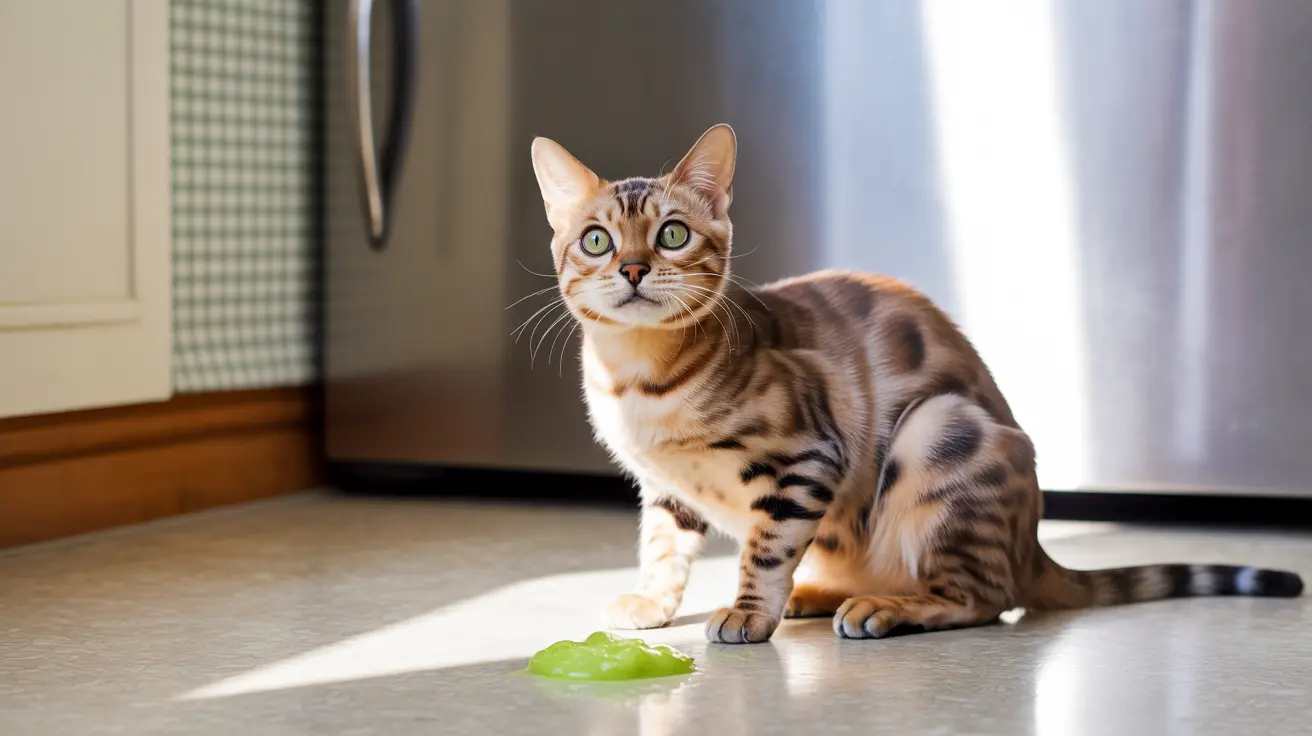If you've ever discovered green cat vomit, you know it can be concerning. As a cat owner, understanding why your feline friend produces green vomit and what it means for their health is crucial for providing proper care. This comprehensive guide will help you understand the causes of green cat vomit, when to be concerned, and how to prevent it.
What Causes Green Cat Vomit?
Green cat vomit typically occurs when bile, a digestive fluid produced by the liver, makes its way into your cat's stomach. This usually happens when your cat's stomach is empty for extended periods. The bile, which normally aids in fat digestion, can irritate the stomach lining when no food is present, leading to vomiting.
Common causes include:
- Eating too quickly or gorging on food
- Dietary changes or sensitivities
- Empty stomach syndrome
- Gastrointestinal issues
- Hairballs combined with bile
Understanding Bile and Its Role
Bile plays a crucial role in your cat's digestive system. This yellowish-green fluid is produced by the liver and stored in the gallbladder. When your cat eats, the gallbladder releases bile into the small intestine to help break down fats and absorb nutrients.
However, when your cat's stomach remains empty for too long, bile can back up into the stomach, causing irritation and resulting in the characteristic green vomit.
Signs and Symptoms to Watch For
While occasional green vomit might not be cause for immediate concern, certain symptoms warrant attention:
- Frequent vomiting episodes
- Loss of appetite
- Lethargy or weakness
- Dehydration
- Changes in behavior
- Weight loss
Prevention and Management
Several strategies can help reduce instances of green cat vomit:
- Feed smaller, more frequent meals throughout the day
- Establish a consistent feeding schedule
- Use slow-feed bowls to prevent gorging
- Ensure fresh water is always available
- Monitor for food sensitivities
- Regular grooming to reduce hairball formation
When to Contact Your Veterinarian
While occasional green vomit might be manageable at home, certain situations require professional medical attention. Contact your vet if you notice:
- Vomiting that persists for more than 24 hours
- Blood in the vomit
- Severe lethargy or depression
- Complete loss of appetite
- Signs of dehydration
- Concurrent diarrhea
Frequently Asked Questions
Why do cats vomit green liquid, and what does it indicate about their health?
Green liquid vomit typically indicates the presence of bile in your cat's vomit. This usually occurs when a cat vomits on an empty stomach, as bile from the small intestine can flow back into the stomach, causing irritation and subsequent vomiting. While occasional bile vomiting isn't usually serious, frequent episodes should be evaluated by a veterinarian.
How can I prevent my cat from vomiting bile, especially on an empty stomach?
The best prevention method is to feed your cat smaller, more frequent meals throughout the day. This helps ensure their stomach isn't empty for extended periods. Additionally, feeding a late-night snack can prevent morning bile vomiting. Using slow-feed bowls and maintaining consistent feeding schedules can also help.
What are the most common causes of green vomit in cats, and when should I seek veterinary care?
Common causes include empty stomach syndrome, dietary issues, gastrointestinal problems, and eating too quickly. Seek veterinary care if vomiting persists for more than 24 hours, contains blood, or is accompanied by lethargy, loss of appetite, or other concerning symptoms.
Can changing my cat's diet help reduce episodes of green vomit, and what foods are recommended?
Yes, dietary changes can help. Choose high-quality, easily digestible cat food appropriate for your cat's age and health status. Some cats benefit from specialized diets recommended by veterinarians. Always introduce new foods gradually to prevent digestive upset.
How can I distinguish between normal bile vomiting and a more serious condition that requires immediate veterinary attention in cats?
Normal bile vomiting is usually occasional and produces yellow-green liquid without blood or other concerning contents. It typically improves with feeding adjustments. However, frequent vomiting, blood in vomit, lethargy, loss of appetite, or accompanying symptoms like diarrhea indicate a need for immediate veterinary attention.
Conclusion
While green cat vomit can be alarming, understanding its causes and implementing preventive measures can help manage this common issue. Remember to monitor your cat's symptoms carefully and seek veterinary care when necessary. With proper care and attention to feeding schedules, you can help minimize episodes of green vomit and maintain your cat's digestive health.






